
The Hidden Treasures of Sussex Museums
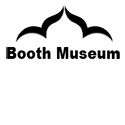
The Booth Museum
The Booth Museum of British Birds was founded by Edward Thomas Booth in 1874 to house his private and expanding collection of stuffed and mounted British birds. At the same time, and since it opened in 1860, the Brighton Town Museum and Art Gallery was collecting natural history specimens of all kinds, mostly donated from local people, and representing species from all over the world. All of these collections came together under one roof in the 1970s when the Booth Museum of Natural History was launched to serve the public as one of the largest collections of natural science in the country under the care of a local authority.
Amongst the collections are significant holdings of Sussex fossils, especially rich in specimens from the Chalk and from the older, Lower Cretaceous rocks of the Weald. The best of the Chalk fossils were collected and donated by Henry Willett of Brighton (1823 - 1905) and those from the Lower Cretaceous by George Bax Holmes of Horsham (1803 - 1887). Significant collections of fossil insects from the Wealden rocks have been added in recent times.
The following images showcase some of the best fossils in the collections. All photography was carried out by Bob Foreman of the Sussex Biodiversity Record Centre, to whom many thanks. There are 3 sets of photographs, the first two look at specimens from the Chalk, the third, specimens from the Lower Cretaceous rocks of the Weald.
More information about the geological collections of the Booth Museum can be found in the introduction to this document:
A Catalogue of the Type, Figured and Cited specimens in the geological collections of the Booth Museum of Natural History, Brighton (updated February 2020) (1.1MB)
John Cooper
Keeper of Natural Sciences, Booth Museum.
September 2014
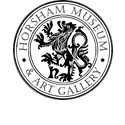
Horsham Museum
The Museum was founded in 1893 by members of the Free Christian Church, based on Worthing Road. The minister J.J. Marten and the Sunday School teachers proposed the creation of a museum "as a means of increasing knowledge among the young people," and a Museum Society was set up to promote collecting among its members and to offer talks and excursions to places of interest.
At first the Museum collection was displayed four times a year from 1893 until 1920. The main focus of the early collections was natural history, geology and curiosities.
In 1928 Park House was sold to the Urban District Council and the old kitchen was made available to the Museum Society as a room for its first permanent display.
At the end of the Second World War Causeway House came up for sale. Horsham historian William Albery offered the town his large collection of documents and items from his Saddlery collection on condition the Museum was found a permanent home. West Sussex County Council bought the house and the Museum's future was assured on the Causeway. In 1966 Horsham Urban District Council took over the running of the Museum and with the creation of Horsham District Council in 1974 the Museum became part of the new Council.
In 1999 the museum was awarded a Heritage Lottery Fund grant to improve storage, displays, cataloguing (including computers) and the fabric of the building. Since 2002 when the project finished the museum has continued to develop. Among its wide variety of collections the museum has a catalogued collection of fossils, the best of which are displayed in the Flints and Fossils Room.
The fossils of particular local interest on display include dinosaur and other fossils from the collection of Horsham resident George Bax Holmes, a noted Victorian collector who started his work around 1832. They also include the more recently discovered bones of the dinosaur Horshamosaurus found at Rudgwick Brickworks in 1985 and well preserved dragonfly wings from the same pit. All are from the Wealden Group of Lower Cretaceous age, specifically the Weald Clay Formation, deposited between 133 and 125 million years ago.
Wealden fossils from the George Bax Holmes Collection
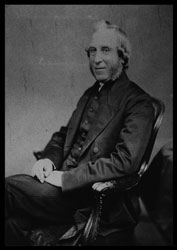
The collection is owned by the Booth Museum in Brighton and the selected specimens of local origin on display at Horsham Museum are on loan from the Booth Museum.
Most prominent are the bones of the dinosaur Iguanodon including one which became known as the Great Horsham Iguanodon, but smaller well preserved fossil parts of crocodilians and pterosaurs are also included.
Reference:
Horsham's Dinosaur Hunter: George Bax Holmes (1803-1887)
by John A.Cooper, Friends of Horsham Museum, 2008
Wealden dinosaur - Horshamosaurus
The bones of an ankylosaurid dinosaur found at Rudgwick Brickworks in 1985 were initially identified as a new species, Polacanthus rudgwickensis. However, further detailed research revealed that the bones probably belong to a new genus which has been named Horshamosaurus, after the Museum. The bones are now identified as Horshamosaurus rudgwickensis and the Friends of the Museum have commissioned a drawing by artist John Sibbick which recreates the probable appearance and habitat of Horshamosaurus.
References:
British Polacanthid Dinosaurs, by William T Blows, Siri Scientific Press, 2015
W T Blows, 1996, A new species of Polacanthus (Ornithischia; Ankylosauria) from the Lower Cretaceous of Sussex, England, Geological Magazine
Wealden Dragonflies
These two specimens represent the first discovery of fossil insects at Rudgwick Brickworks in 1982. They were found in ironstone concretions from the Weald Clay. Each belongs to a different species of petalurid dragonflies, Libellulium zdrzaleki and Libellulium standingae.
Reference:
E A Jarzembowski, 1994, Fossil dragonflies in Horsham Museum, Proceedings of the Geologists' Association
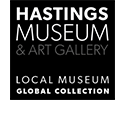
Hastings Museum
History of Hastings Museum & Art Gallery
In October 1889, a meeting was held to discuss the possibility of founding a Public Museum for Hastings. As a result, the Hastings & St Leonards Museum Association was formed in August of the following year.
The committee drew on their own expertise and that of their wider circle of Association subscribers, but also sought advice from eminent curators, collectors and specialists. The Public Museum opened on 16 August 1892 in rooms provided by the Hastings Corporation in the Brassey Institute. The Museum Association were responsible for collecting exhibits, displays, talks to schools and fundraising.
The Hastings Corporation finally agreed to take over the running of the Museum. The Association handed over the running of the Museum and its collections to the Hastings Corporation on 1 March 1905.
The collections continued to expand. Curator Ruskin Butterfield realised that important relics of the old Sussex industries were disappearing fast, particularly during the First World War. He made public appeals for social and local history items, and laid the foundations of the Sussex Ironworking and Pottery collections. He also continued to acquire classical archaeology, exotic curios and natural sciences, including geology.
In 1919, Lord Brassey's will bequeathed to the town the magnificent Durbar Hall and the contents of the Lady Brassey Museum displayed in it. The need for larger premises was becoming increasingly urgent.
The Corporation eventually found John's Place in Bohemia Road, and it opened to the public in November 1928.
Fossil collectors
Fossils formed an important part of the Museum's earliest collections. Four men were particularly influential in building our impressive collection.
Samuel Husband Beckles 1814-1890
Barrister and Fellow of the Royal Geographical Society
Beckles retired to 9 Grand Parade, St Leonards, for health reasons in 1845. Once here, he developed his interest in the sciences, particularly the geology of the Weald.
He was the first to recognise the bird-like Iguanodon foot-impressions in the rocks near Hastings.
In 1859, his contribution to science was recognised by his election as a Fellow of the Royal Geographical Society.
A large part of his collection was bought by the British Museum, London, but many of his Wealden fossils were bought by Hastings Museum. They formed part of the displays when the Museum first opened in 1892.
Philip James Rufford
Civil engineer, keen geologist and authority on natural history
Rufford retired to Hastings at the age of 36. For a number of years, he was the Museum's authority on natural history and helped it to buy the Beckles Collection. He was on the Museum Committee from 1893-1902.
His collection of Wealden plant fossils was split between Hastings Museum and the British Museum. It is one of the most important collections of its kind.
His favourite collecting-ground was along the seashore from Rock-a-Nore to Cliff End, Fairlight, where he found many fine plant specimens in the Fairlight Clays.
Edward John Baily 1859-1939
Brewery owner and fossil collector
The owner of the Baily & Co Brewery in Battle, he moved to Bexhill in 1912.
His collection of over 650 specimens was collected at various sites, including Hastings, Telham, Darvel Beach, Archer Wood, and Higham, near Robertsbridge.
Father Pierre Teilhard de Chardin 1881-1955
Jesuit priest, philosopher, author and geologist
From 1908-1912, Teilhard de Chardin studied theology at Ore Place, Hastings, and was ordained a Jesuit priest in 1914.
He was inspired by the countryside surrounding Hastings and fascinated by the fossils he found in the Wealden Clay and coastal cliffs.
He and a fellow student, Felix Pelletier, collected around 150 plant and animal fossils locally, which they gave to Hastings Museum in 1912.
Cathy Walling
Museum Curator
August 2017
Reference:
The background to the local Wealden geology and fossils is clearly described in:
Geology and Fossils of the Hastings Area
By Ken Brooks
Second Edition 2014, published by Ken & Diana Brooks
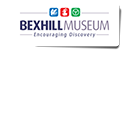
Bexhill Museum
Bexhill’s Lost World Project
The museum was originally the Egerton Park Shelter Hall and was built in 1903. It was taken over as Bexhill Museum in 1914 and we have been here ever since. Located close to Bexhill’s iconic De La Warr Pavilion, and the seafront, Bexhill Museum houses a significant collection of Wealden, Lower Cretaceous fossil flora and fauna, including many dinosaur fossils of global scientific importance.
While some of these fossils are on public display, space is currently very limited. However, plans are afoot, under the museum’s ‘Lost World Project’, to create a purpose built new gallery to house and display many local fossils, that will also showcase our important dinosaur fossil specimens for the very first time.
These specimens include a cervical vertebra from a Maniraptoran dinosaur, believed to be from the smallest theropod dinosaur known to science, as well as partial skeletons of the Iguanodontian dinosaurs Barilium and Hypselospinus. As well as some notable theropod teeth, including Baryonyx, the crown jewels of our extensive dinosaur collection must be the partial skeleton, including dermal armour, of the extremely rare Thyreophoran dinosaur, Polacanthus.
With more important specimens being unearthed and donated to the museum collections all the time, encouraged through our responsible collecting Code Of Conduct, the creation of a new gallery to house these specimens is a priority for the museum.
For more information about the museum and our Lost World Project please visit the museum’s website at: www.bexhillmuseum.co.uk
Andy Ottaway
May 2018
Reference:
The background to the local Wealden geology and fossils is clearly described in:
Geology and Fossils of the Hastings Area
By Ken Brooks
Second Edition 2014, published by Ken & Diana Brooks